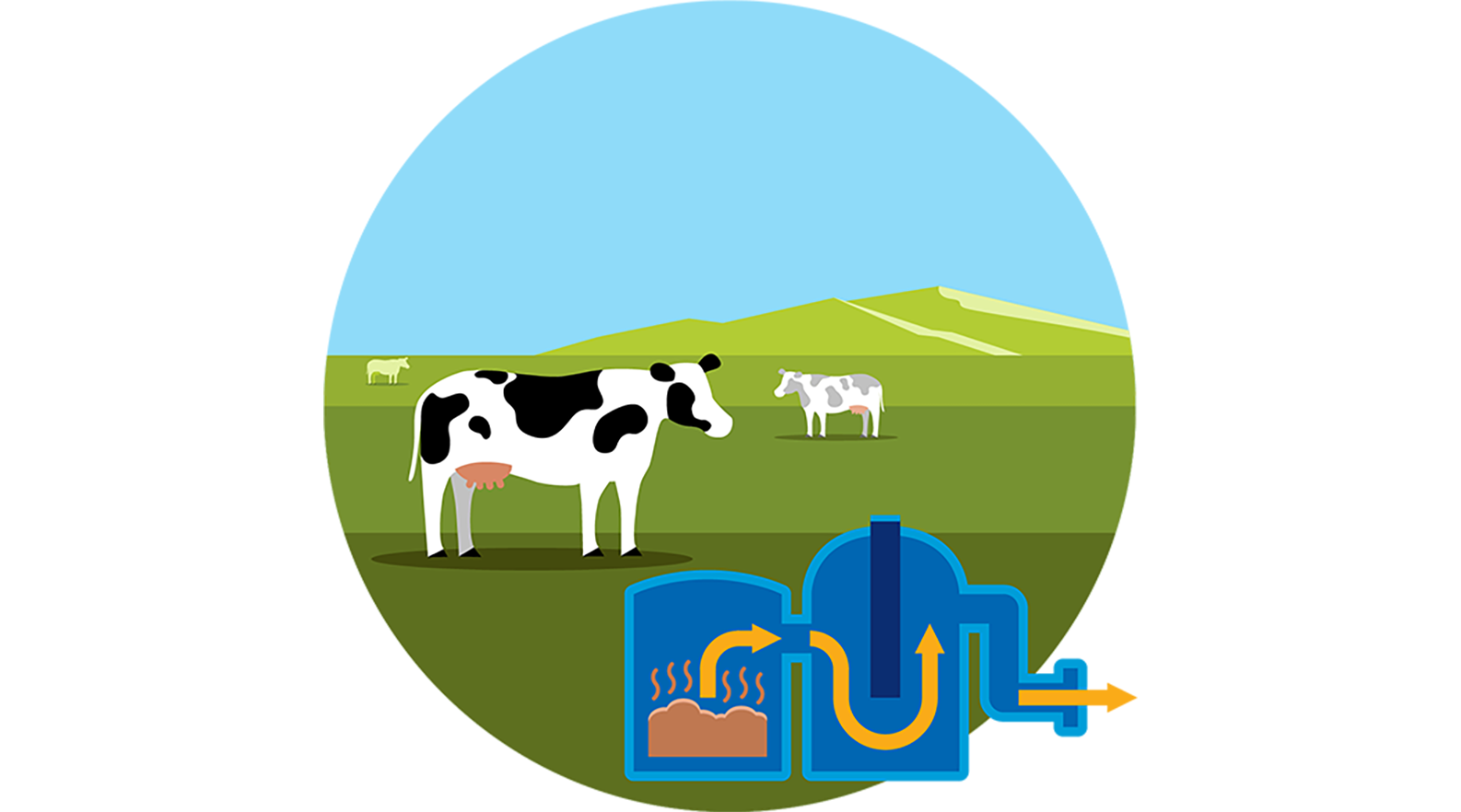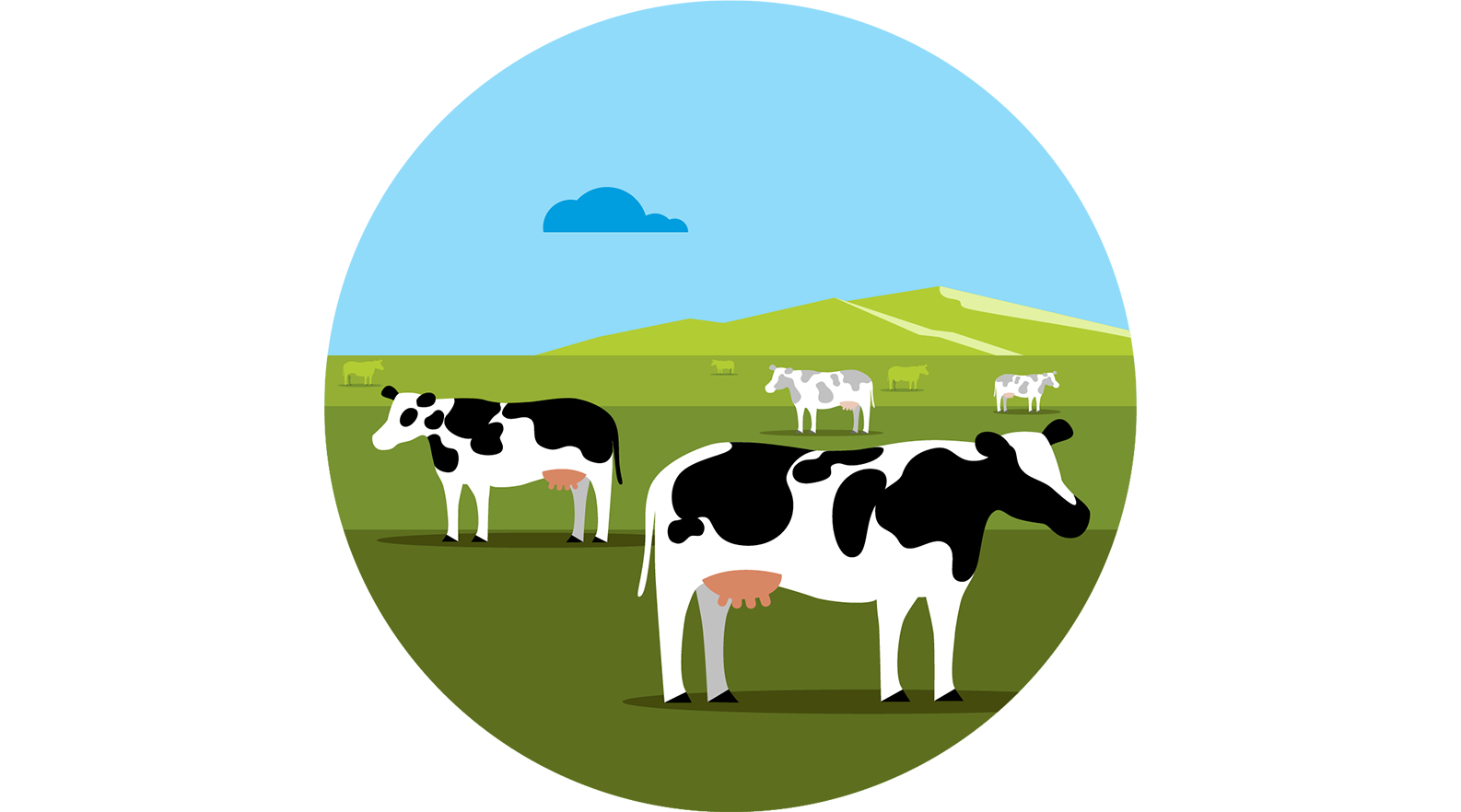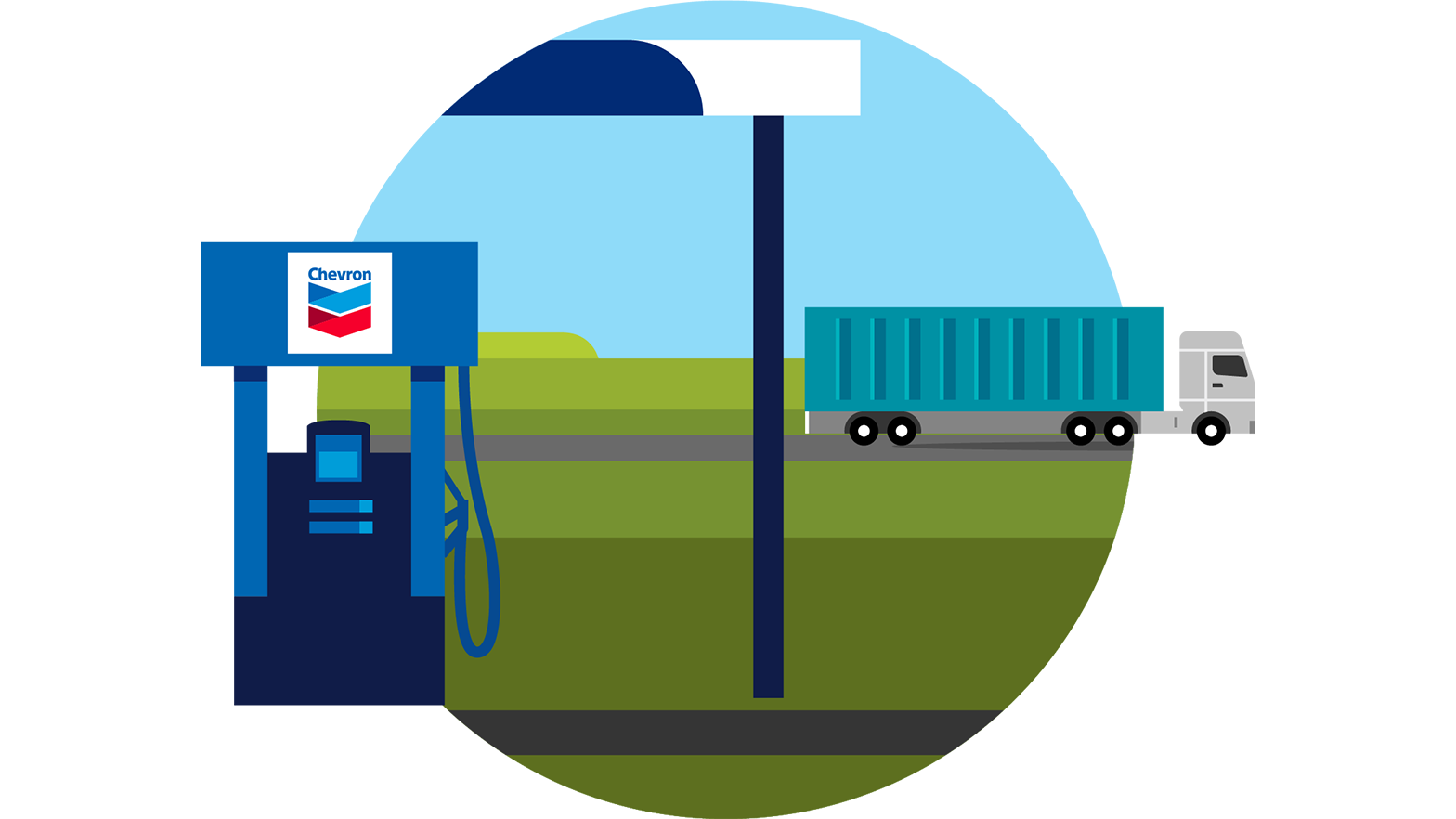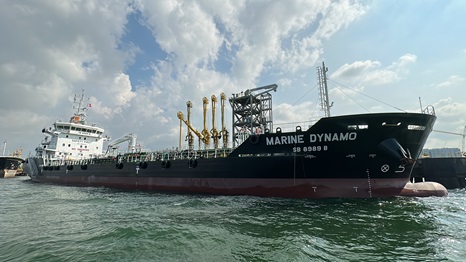alternative fuels
things to know about renewable natural gas
5 min read | april 25, 2022
what renewable natural gas is
Renewable natural gas, or RNG, is biogas that has been upgraded and placed in the conventional natural gas system. It’s produced from multiple sources, including livestock waste, landfills, wastewater sludge, food waste and other organic waste operations. RNG can be used for electricity generation, thermal functions like heating and cooking, bioplastics and vehicle fuel.
Chevron works with our partners in the United States to convert methane from cow waste into RNG for use in heavy-duty vehicles.
mike wirth
chairman and CEO

how RNG is made and distributed
Bacteria naturally break down organic waste and produce raw methane, carbon dioxide (CO2) and other gases. The process is called “anaerobic digestion.” The raw methane is between 45% and 65% pure, not quite ideal for commercial use. It must be treated, or “upgraded,” to remove contaminants and reach nearly pure levels, typically 95% or higher.
After RNG is upgraded, it can then be injected and transported through natural gas pipeline networks and used as a substitute that is virtually indistinguishable from natural gas. The difference is RNG is produced from biological materials instead of fossil fuel deposits.

why renewable natural gas matters
Renewable natural gas can, one day, help reduce the life cycle carbon intensity of transportation fuels while meeting the world’s growing energy needs. It’s essential for the growth of lower carbon fuel markets and can help reduce the impact of organic wastes.
Innovating methods to produce carbon-negative RNG from dairy cow waste is an integral part of Chevron’s portfolio of solutions.
benefits of RNG
- The U.S. and California classify RNG as an advanced biofuel for transportation
- It helps improve fuel security, economic revenues or savings, local air quality and greenhouse gas reductions
- Producing RNG helps reduce agricultural methane release in the atmosphere
- RNG could reduce yearly emissions from animal manure by 258 million tons
- RNG production may also reduce manure runoff into rivers and water supplies
~ 400%
Decrease in life cycle carbon intensity for RNG over conventional diesel under California standards
~ 50%
Capturing RNG from landfills to power a vehicle represents a decrease of nearly 50% in life cycle carbon intensity under California’s Low Carbon Fuel Standard
100+
100+ CNG-fueled trucks funded by Chevron through our Adopt-a-Port initiative with Clean Energy
first gas
First RNG achieved with partner CalBio (September 2020)
First RNG achieved with partner Brightmark (October 2021)

where the rubber meets the road
Renewable fuels like renewable natural gas can help lower the carbon emissions in transporting the things we need.
RNG will soon be available to heavy transportation operators, like truckers, in California. This will start with the rebranding of the Allied Clean Fuels Plaza retail station in Napa as Chevron’s first compressed natural gas (CNG) station.
topics covered
related content
-
 3 things to know about the future of hydrogen
3 things to know about the future of hydrogenemissions solutionsmarch 29, 2024
-
 1st hybrid fueling barge chartered in Singapore
1st hybrid fueling barge chartered in Singaporealternative fuelsmarch 28, 2024
-
 laying the foundation to realize carbon capture’s potential
laying the foundation to realize carbon capture’s potentialemissions solutionsmarch 27, 2024
-
 global gas markets are changing: what it means
global gas markets are changing: what it meansemissions solutionsmarch 25, 2024
chevron email updates
Subscribe to our newsletter to receive news and updates.



